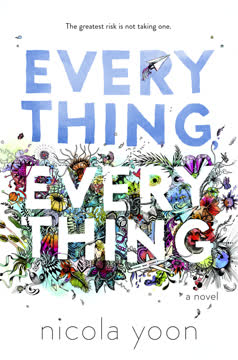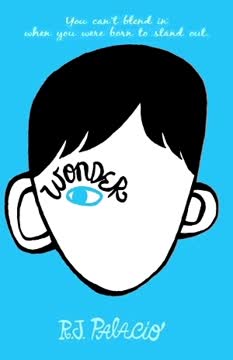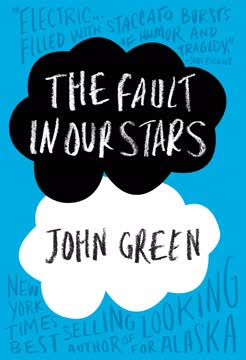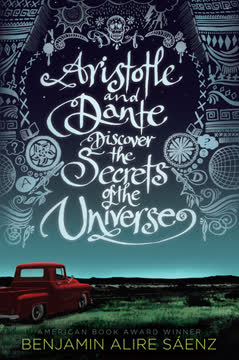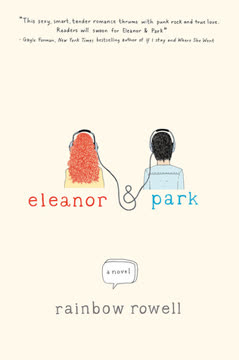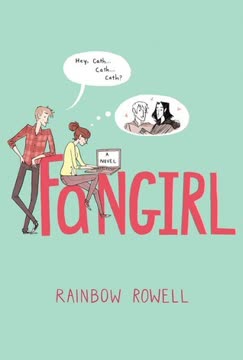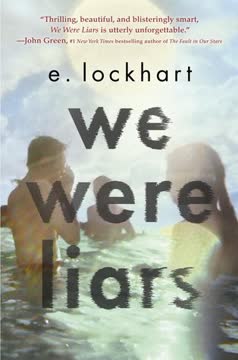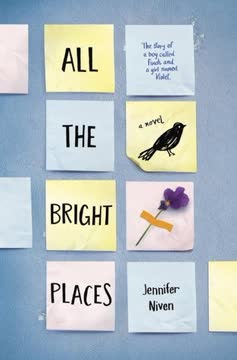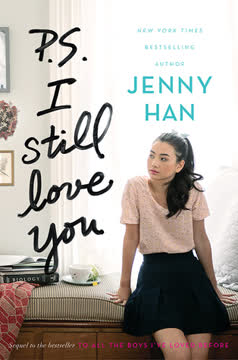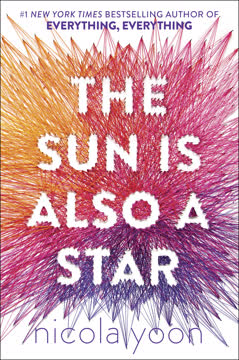Plot Summary
The White Room Prison
Madeline Whittier's world is a white, sanitized room—her entire life contained within the walls of her home. Diagnosed with Severe Combined Immunodeficiency (SCID), she's been told she's allergic to the world, unable to leave her house for fear of deadly illness. Her mother, a doctor, is her caretaker, and Carla, her nurse, is her only other companion. Madeline fills her days with books, online classes, and rituals that mark the passage of time, but the sameness is suffocating. She yearns for more, but has learned to suppress her desires, believing that safety is the only way to survive. Her life is a study in monotony, punctuated only by the rare, sanitized delivery of new books—her only window to the outside world.
Bubble Girl's Birthday
On her eighteenth birthday, Madeline and her mother follow their annual traditions: baking a vanilla cake, playing invented games, and watching their favorite movie. The day is filled with laughter and love, but also a deep, unspoken sadness. Each birthday is a reminder of another year lost to illness, another year of missed milestones—no school dances, no driver's license, no first kiss. Madeline's mother tries to make the day special, but both are acutely aware of what's missing. The celebration is both a comfort and a wound, highlighting the closeness between mother and daughter, but also the cost of Madeline's confinement.
New Neighbors Arrive
The arrival of a new family next door disrupts Madeline's routine. She watches from her window as the family moves in, captivated by the teenage boy, Olly, whose energy and grace are magnetic. Olly's family is chaotic—his father is volatile, his sister rebellious—but Olly himself is a force of life. For the first time in years, Madeline feels a pull toward the world outside her window. The possibility of connection, of something new, awakens a longing she's tried to bury. The new neighbors represent both danger and hope, a reminder that life is happening just beyond her reach.
Watching Olly
Madeline becomes a silent observer of Olly's life, tracking his routines and family dynamics. She learns about his love of parkour, his troubled home, and his resilience. Their windows face each other, and soon, their glances become a secret language. Madeline's fascination grows into a quiet obsession—Olly is unpredictable, alive, everything she is not. She documents his family's patterns, noting the dysfunction and violence, but also the moments of tenderness. Watching Olly becomes her escape, a way to feel connected to a world she cannot touch.
Forbidden Friendship
After a series of playful window exchanges, Olly and Madeline begin communicating online. Their emails and instant messages are witty, vulnerable, and honest in ways neither has experienced before. Madeline is cautious, aware of the risks, but Carla, her nurse, senses the importance of this connection and eventually allows a supervised, in-person meeting. The friendship deepens quickly, fueled by the intensity of their isolation and longing. For Madeline, Olly is both a lifeline and a threat to the fragile equilibrium of her world. Their bond is a rebellion against the rules that have defined her life.
First Contact
The first face-to-face meeting between Madeline and Olly is electric and awkward. In the sunroom, surrounded by fake plants and filtered air, they navigate the boundaries of safety and desire. The rules are strict—no touching, no closeness—but the emotional intimacy is undeniable. Madeline is overwhelmed by the reality of Olly's presence, his physicality, and the possibility of something more. The encounter leaves both exhilarated and terrified, aware that even this small risk could have devastating consequences. The sunroom becomes a stage for their burgeoning relationship, a place where hope and fear coexist.
Rules and Risks
As Madeline and Olly's relationship intensifies, so do the risks. They push the limits of Carla's rules, sneaking touches and sharing secrets. Madeline's mother remains oblivious, but the strain of deception grows. The thrill of connection is shadowed by anxiety—every cough, every tingle could signal disaster. Madeline grapples with guilt over lying to her mother and endangering herself, but the taste of freedom is intoxicating. The boundaries between safety and danger blur, and Madeline must decide how much she is willing to risk for love and life.
Sunroom Encounters
The sunroom becomes the heart of Madeline and Olly's relationship. Here, they share stories, dreams, and eventually, their first touch and kiss. The physical connection is overwhelming for Madeline, who has never experienced intimacy before. Each encounter is a revelation, a step further from the life she's always known. The sunroom, once a symbol of her imprisonment, transforms into a sanctuary of possibility. But with each new boundary crossed, the threat of discovery—and illness—looms larger. The sunroom is both haven and crucible, where love and fear are in constant tension.
Love and Lies
Madeline's secret relationship with Olly cannot remain hidden forever. Her mother discovers the truth, leading to Carla's dismissal and a tightening of restrictions. Madeline is devastated by the loss of her nurse and confidante, and the rupture with her mother is profound. The lies that once protected her now isolate her further. Olly, too, is caught in the fallout, as his own family unravels under the weight of abuse. The cost of love becomes painfully clear—freedom and connection come at the price of trust and safety. Madeline is forced to confront the limits of her world and the consequences of her choices.
Crossing the Line
When Olly's father becomes violent, Madeline breaks all the rules and rushes outside to help him, risking her life for the first time. The act is both impulsive and inevitable—a culmination of her longing to live and love fully. The aftermath is swift and severe: Madeline is confined, Carla is fired, and her relationship with Olly is severed. The taste of the outside world lingers, making her confinement unbearable. Madeline realizes that survival without living is its own kind of death. The line between safety and suffocation is irrevocably crossed.
Consequences and Exile
In the wake of her rebellion, Madeline is cut off from Olly and the world. Her mother tightens control, and Madeline spirals into depression. The loss of Carla, the end of her relationship, and the return to isolation are crushing. Madeline tries to convince herself that safety is enough, but the memory of freedom haunts her. She reads existential novels, trashes Olly's emails, and pretends to be content, but the ache of longing persists. The exile is both punishment and crucible, forcing Madeline to confront who she is without the boundaries that once defined her.
The World Beyond Glass
Unable to endure her half-life any longer, Madeline makes a radical decision: she will risk everything to truly live. She escapes her home and convinces Olly to help her run away to Hawaii. The journey is both literal and symbolic—a leap into the unknown, a rejection of fear as the organizing principle of her life. In Hawaii, Madeline experiences the world for the first time: the ocean, the sun, the taste of freedom, and the fullness of love. The joy is intoxicating, but the risk is real. Madeline's body, untested by the world, begins to fail, and she is hospitalized, her dream of freedom nearly fatal.
Escape to Hawaii
In Hawaii, Madeline and Olly live intensely—snorkeling, cliff diving, making love, and savoring every moment. The world is vibrant and overwhelming, a sensory feast after years of deprivation. Madeline is both exhilarated and terrified, aware that every breath could be her last. The experience is transformative, a glimpse of the life she's always wanted. But the price is steep: Madeline falls gravely ill, her heart stops, and she is rushed to the hospital. The escape is both a triumph and a tragedy, a testament to the cost of choosing life over fear.
The Price of Freedom
Madeline survives her illness, but the consequences are devastating. She is returned home, her relationship with Olly in ruins, and her trust in her mother shattered. The experience forces her to question everything she's been told about her illness and her life. A letter from a doctor in Hawaii suggests that Madeline may not have SCID after all. The revelation is both liberating and destabilizing—if she's not sick, then her entire life has been a lie. Madeline embarks on a quest for the truth, uncovering the extent of her mother's deception and the psychological wounds that drove it.
Shattering Truths
Madeline's investigation reveals that her mother, traumatized by the loss of her husband and son, fabricated Madeline's illness to keep her safe. The discovery is shattering—Madeline's life has been stolen by her mother's grief and fear. The realization is both a betrayal and a liberation. Madeline must grapple with the enormity of what's been done to her, the years lost, and the identity she must now forge for herself. The truth is both a wound and a doorway, forcing Madeline to confront her mother, her past, and the possibilities of her future.
Mother's Madness
Madeline confronts her mother, demanding answers and accountability. Her mother's breakdown is complete—she cannot distinguish between love and possession, protection and imprisonment. The confrontation is raw and painful, exposing the depths of her mother's mental illness and the cost of unchecked grief. Madeline is forced to choose between compassion and self-preservation, between understanding her mother's pain and reclaiming her own life. The relationship is irrevocably changed, but the confrontation is necessary for Madeline's healing. She must leave the ruins of her old life to build something new.
Reclaiming Life
With the truth revealed, Madeline begins the slow process of reclaiming her life. She reconnects with Carla, forgives her mother in time, and starts to explore the world on her own terms. The journey is uncertain—her immune system is fragile, her future unknown—but the possibility of living is finally real. Madeline paints her room in colors, opens the windows, and lets life in. She reaches out to Olly, seeking forgiveness and a second chance. The process of healing is ongoing, but Madeline is no longer defined by fear or lies. She is free to choose her own path.
Everything, Everything
In the end, Madeline chooses life, love, and the unknown. She travels to New York to reunite with Olly, ready to embrace the world in all its messiness and beauty. The story comes full circle—from isolation to connection, from fear to courage, from lies to truth. Madeline's journey is a testament to the power of love, the necessity of risk, and the importance of claiming one's own life. She is no longer the girl in the white room—she is everything, everything.
Characters
Madeline Whittier
Madeline is an eighteen-year-old girl raised in total isolation due to a supposed diagnosis of SCID. Her world is defined by caution, routine, and the love of her mother and nurse, Carla. Madeline is intelligent, imaginative, and deeply introspective, finding solace in books and daydreams. Her psychological journey is one of awakening—from passive acceptance of her fate to a fierce desire for autonomy and experience. The arrival of Olly catalyzes her transformation, forcing her to confront the boundaries of her existence and the lies that underpin it. Madeline's development is marked by courage, vulnerability, and a relentless pursuit of truth, even when it shatters her world.
Olly (Oliver Bright)
Olly is Madeline's new neighbor, a boy marked by physical agility, quick wit, and emotional scars. Living with an abusive father, Olly has learned to adapt, protect his family, and seek escape through parkour and humor. His relationship with Madeline is transformative for both—he offers her a glimpse of the world's possibilities, while she gives him hope and connection. Olly's psychological complexity lies in his resilience and his struggle to break free from cycles of violence and fear. He is both protector and risk-taker, embodying the tension between safety and freedom that defines the novel.
Pauline Whittier (Madeline's Mother)
Pauline is a doctor and Madeline's sole parent, traumatized by the loss of her husband and son. Her love for Madeline is fierce but warped by grief, leading her to fabricate Madeline's illness and imprison her in a world of fear. Pauline's psychological profile is one of profound loss, denial, and mental illness—her need to protect becomes pathological, blurring the line between care and control. Her relationship with Madeline is both nurturing and suffocating, ultimately revealed as the source of Madeline's greatest suffering. Pauline's arc is tragic, a cautionary tale about the dangers of unchecked grief and the limits of love.
Carla Flores
Carla is Madeline's nurse and confidante, providing warmth, humor, and a sense of normalcy in an abnormal life. She is pragmatic, empathetic, and willing to bend the rules for Madeline's happiness. Carla's own experiences as an immigrant and mother inform her understanding of risk and freedom. She encourages Madeline to seek connection and experience, even when it means challenging Pauline's authority. Carla's dismissal is a turning point, highlighting the cost of truth and the importance of chosen family. Her return in the novel's final act underscores the power of forgiveness and unconditional support.
Kara Bright
Kara is Olly's younger sister, a secondary but significant presence. She copes with her family's dysfunction through rebellion—smoking, sarcasm, and emotional withdrawal. Kara's relationship with Olly is complex; she is both dependent on and resentful of him. Her character reflects the collateral damage of domestic violence and the ways children adapt to trauma. Kara's arc is one of survival, her silence and anger masking deep vulnerability.
Olly's Father
Olly's father is a volatile, abusive figure whose presence looms over both his family and the narrative. His violence and unpredictability shape Olly's worldview and drive much of the novel's tension. He represents the destructive power of unchecked anger and the ways in which trauma perpetuates itself across generations. His eventual departure is both a relief and a reminder of the scars left behind.
Olly's Mother
Olly's mother is a passive figure, unable to protect herself or her children from her husband's violence. Her inability to leave reflects the complexities of abuse—hope, denial, and the paralysis of fear. She is both a cautionary figure and a source of empathy, illustrating the ways in which love can become a trap.
Zach
Zach is Olly's friend in Hawaii, a minor but meaningful character. Openly gay and pursuing his own dreams, Zach represents the possibility of self-acceptance and chosen family. His presence in Hawaii offers Madeline and Olly a glimpse of a life beyond fear and secrecy.
Dr. Melissa Francis
Dr. Francis is the doctor in Hawaii who first questions Madeline's diagnosis, setting in motion the unraveling of Pauline's deception. Her role is brief but pivotal, embodying the importance of second opinions and the dangers of medical authority unchecked by oversight.
Carla's Daughter, Rosa
Rosa is mentioned but never seen, serving as a contrast to Madeline's life. Her typical teenage rebellion and distance from her mother highlight what Madeline has missed and what Carla has sacrificed.
Plot Devices
Isolation as Imprisonment and Metaphor
The novel's central device is Madeline's isolation—her white room is both a literal prison and a metaphor for emotional and psychological confinement. The sterile environment, filtered air, and strict routines symbolize the ways in which fear can become a cage, not just for Madeline but for her mother as well. The narrative structure—interspersed with diary entries, emails, and lists—mirrors Madeline's fragmented experience of the world, emphasizing the distance between observation and participation.
Epistolary Elements and Multimedia Storytelling
The use of emails, instant messages, charts, and illustrations creates a sense of immediacy and intimacy, allowing readers to experience Madeline's world from the inside. These devices break up the narrative, reflecting Madeline's short attention span and the piecemeal way she constructs meaning. The epistolary elements also serve as a bridge between isolation and connection, showing how technology can both connect and separate.
Foreshadowing and Unreliable Narration
The novel employs subtle foreshadowing—Madeline's lack of symptoms, her mother's overprotectiveness, and Carla's doubts all hint at the eventual revelation that Madeline is not truly sick. The unreliable narration, filtered through Madeline's limited perspective, creates suspense and invites readers to question what is real. The gradual unraveling of the truth is both a plot twist and a commentary on the power of belief and authority.
The Hero's Journey and Coming-of-Age
Madeline's arc follows the classic hero's journey: from innocence and confinement, through trials and rebellion, to revelation and self-actualization. The journey to Hawaii is both a literal and symbolic crossing of the threshold, a test of courage and a claim to agency. The return home, armed with new knowledge, completes the cycle, but the ending is open—Madeline's story is just beginning.
Symbolism of the Sunroom and the Outside World
The sunroom, with its fake plants and filtered light, symbolizes the illusion of freedom and the limits of imagination. Hawaii, by contrast, represents the fullness of life—color, danger, and possibility. The transition from one space to the other mirrors Madeline's psychological transformation, from passive observer to active participant in her own life.
Analysis
Nicola Yoon's Everything, Everything is a poignant exploration of the tension between safety and living, love and fear, truth and deception. At its core, the novel asks what it means to be alive: Is survival enough, or must we risk everything to truly live? Through Madeline's journey from isolation to self-discovery, Yoon interrogates the ways in which love can both protect and imprison. The novel's twist—that Madeline's illness is a fabrication born of her mother's trauma—forces readers to confront the dangers of unchecked grief and the ethical limits of parental love. The story is also a celebration of first love, the intoxicating freedom of risk, and the necessity of forging one's own identity. In a world obsessed with safety, Everything, Everything reminds us that life's meaning is found not in the absence of danger, but in the courage to embrace the unknown. The novel's blend of humor, heartbreak, and hope makes it a resonant coming-of-age tale for anyone who has ever longed for more.
Last updated:
Review Summary
Everything, Everything received mostly positive reviews, with readers praising its unique premise, diverse characters, and emotional impact. Many found the romance between Maddy and Olly sweet and compelling. Some criticized the plot as predictable and the ending as controversial. Readers appreciated the creative format, including illustrations and mixed media elements. While some felt the book was unrealistic or had pacing issues, many found it to be a captivating and thought-provoking read that explored themes of love, risk, and living life to the fullest.
Similar Books
Download PDF
Download EPUB
.epub digital book format is ideal for reading ebooks on phones, tablets, and e-readers.
